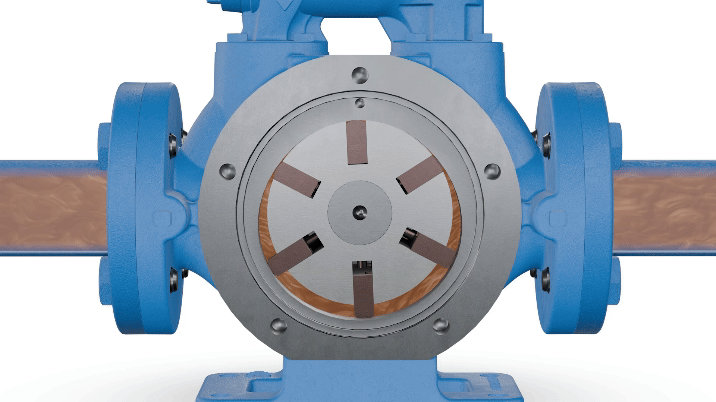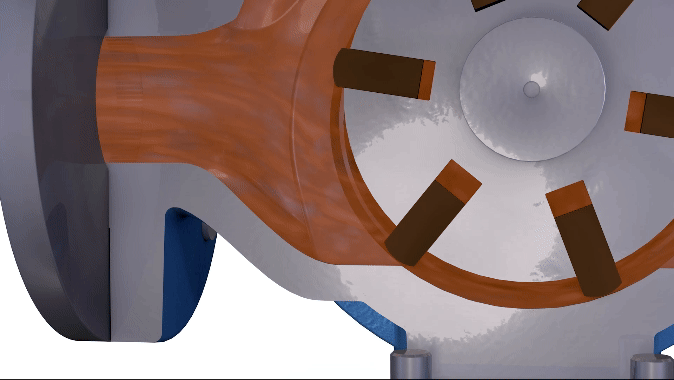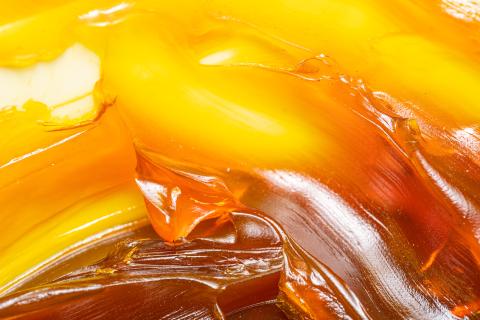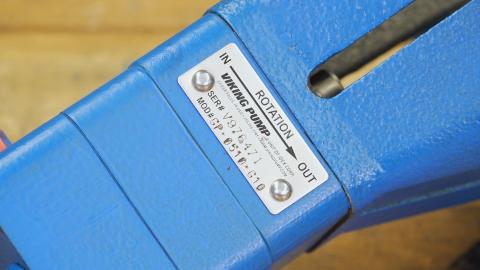Vingpump

En typ av roterande positiv förträngningspump som består av en slitsad rotor som är förskjuten i ett kamformat hölje. Glidande skivor i rotorns slitsar sträcker sig för att skapa pumpkaviteter, sveper vätskan genom höljet och driver ut vätskan på pumpens utloppssida när kammen minskar i area och tvingar varje skiva tillbaka in i sin slits. Klicka här för att se vår video om hur det fungerar
What is a vane pump?
Vane pumps are a type of rotary positive displacement pump consisting of a slotted rotor offset in a cam shaped housing. Sliding vanes in the slots of the rotor extend to create pumping cavities, sweep the liquid through the casing, and expel the liquid at the discharge side of the pump as the cam reduces in area and forces each vane back into its slot. Click here to view our How it Works video on this topic.

How does a vane pump work?
Vane pumps move fluid using the rotary motion of multiple sliding vanes. Vane pumps consist of a slotted rotor rotating inside a cam shaped housing. This rotor is located close to the wall of the cam so that a crescent-shaped cavity is formed on the opposite wall.
Each rotor slot contains a sliding vane. As the rotor rotates, centrifugal force, hydraulic pressure, and push rods work together to extend each vane to the casing wall. This creates an expanding cavity on the inlet side – creating a vacuum which pulls liquid into the pump. Liquid is trapped between the vanes and the casing wall. The rotor rotation moves the liquid cavities around to the outlet side of the pump.
At the outlet side, the vanes are forced back into their slots, decreasing the cavity size and forcing the liquid through the outlet port.

What are vane pumps used for?
Since vane pumps have sliding vanes that run in contact with the casing wall, they are commonly used in thin liquid applications like solvents, alcohols, and various acids or bases.







